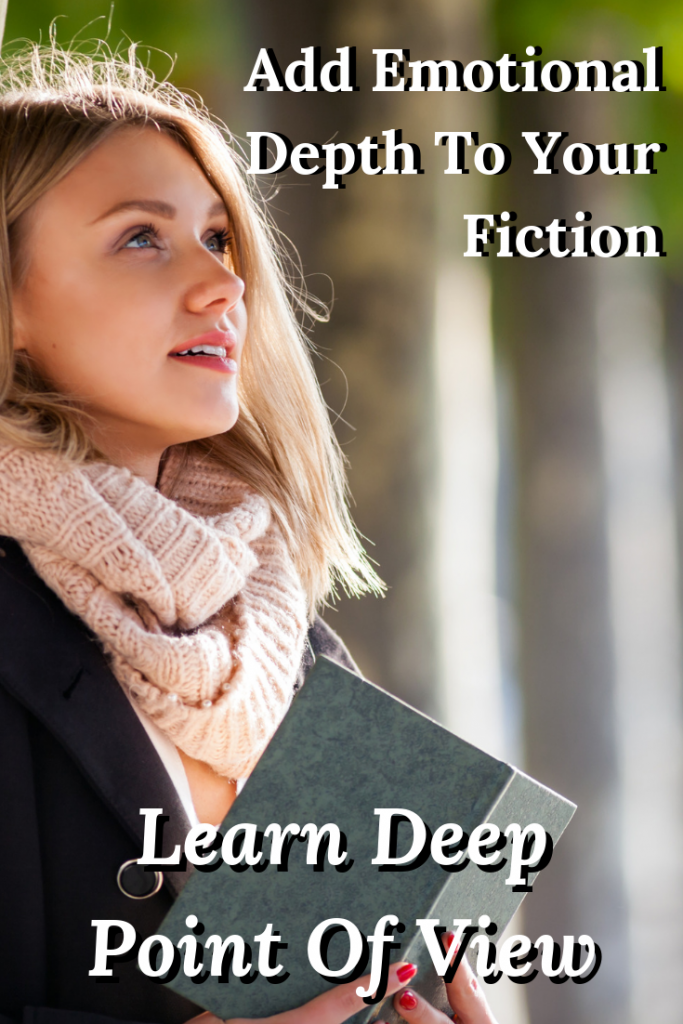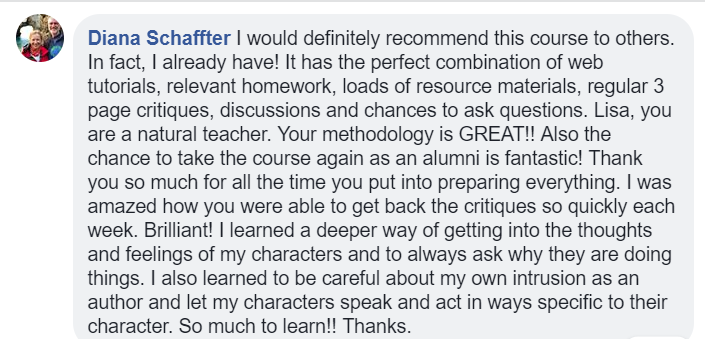
When you only have the basics of deep point of view, writing with this technique becomes a bit like exploring a new house by groping your way through the main floor in the dark. You’re guessing, making assumptions, and skimming over important details. This is a case where a little information is a dangerous thing. Many writers take these basic strategies and think that’s all there is to it, but there’s SO MUCH more to deep point of view.
Deep point of view is hard to learn because it’s hard to find more information than just the basics!
The Four Basics Everyone Covers
If you do a search on deep point of view, you’ll probably find a rehash of the same four or five basic principles of deep point of view. And these are a great starting place. The problem is that those blogs don’t tell you they’re just scratching the surface – or maybe they don’t know themselves if they don’t write in deep point of view.
What are the basics? Avoid telling (such as naming emotions). Remove all distance and thinking words. Watch for author intrusion. Write tight (because deep pov often adds to your word count).
These are great tips, but the problem is writers read these and think that’s all there is to deep point of view. If they can master these things, they’re off to the races. And it can’t really be that hard, right. Just do a search in your manuscript for these naughty words — good to go!
Not quite.

What Makes Deep Point Of View Work?
I wrote about whether deep point of view will work for your story, which is a different question. What makes deep point of view work is much deeper than plot drivers or genre.
The power of deep point of view is the intimate perspective, the raw and authentic emotions, and the very narrow worldview readers experience a story through. You can nail all the basics mentioned above and still get feedback that you need to go deeper.
I created the Deep Point Of View Blueprint so you’d have an idea of what techniques and tools you’ll need to explore more if you wanted to do the research and learning on your own.
That’s how I learned. But it took me years and years to do it on my own!
I went to my first writer’s conference in 2007. I won free registration. That’s where I first heard about close third person — which is sorta deep point of view but not quite. I was fascinated by the way my favourite authors were now writing in such a way that I felt like I was IN the story. There was a fresh intensity and connection to books I hadn’t felt before (and I was a lifelong reader) and I set out to write like this for myself.
I recently came across conference critiques I’d received in 2011 – so FOUR YEARS after I first launched my own exploration and study into what would become known as deep point of view. So, after four years I was convinced I had the basics down pat (but I didn’t know they were just the basics) and had a publishable story.
The editor, agent, and contest judge made the same comments I’d heard everywhere else without much help on what to do next:
Great concept, but I don’t understand why [character name] made that decision – it’s irrational. Undercuts the tension.
Ouch! How about this one:
You need to go deeper. I don’t know how your character feels about this. If I don’t know how they feel, I can’t care with them.
Or…
I can’t picture any of what’s going on. Lot of suspense, but I wasn’t drawn in…
For FOUR YEARS!! I’d been studying and reading up on deep point of view and guys – I was still missing the point. I still couldn’t get deep point of view to work for me! And I couldn’t find the information I needed in one place.
I came home absolutely defeated. What was I missing? I had done everything the blogs and writing books had said to do. If I was lucky, I’d get one or two comments on the next thing to work on: use beats not tags; this is author intrusion; this is telling… Let me tell you, that is the SLOW and expensive way to learn! lol
I almost quit. I needed to go deeper – but I don’t know HOW!! Have you been there too?

It took years and years working on my own to grasp what deep point of view was really about. I had to delve into intermediate topics on writing and taught myself to see the connections and common threads. I studied the books that made me FEEL to see how they were using language and perspective. I read psychology books on emotions and body language, and started incorporating the information about behavior, thinking, and coping I was learning with my therapist into my writing.
I didn’t realize how comprehensive writing in this style was until I sat down to create my deep point of view masterclass and pulled all the threads together into a bite-size series that even newer writers could learn from and use right away.
Deep point of view is not hard to learn once you understand what effect you’re trying to create and the range of tools you have at hand to do that. It’s more than a set of rules — words to avoid. It’s a shift in how you tell stories, in digging deep into your own emotional experience, and creating an effect that pulls readers so deep into a story they feel like they’re RIGHT THERE WITH YOUR PROTAGONIST.
My deep point of view masterclass is open right now. This course is almost 5 weeks long. It’s intense. It’s a masterclass for intermediate writers. You will have to work – but at the end you’ll have all the tools, a concept map on how to use the tools, personalized feedback, and a community of writers you can turn to when you need a hand.



Been told you should learn Deep Point Of View? Had an editor or critique partner tell you to “go deeper” with the emotions in your fiction? Looking for a community of writers seeking to create emotional connections with readers? Check out the Free Resource Hub and then join the Going Deeper With Emotions In Fiction Facebook group.
I’m at the bottom rung of the intermediate ladder, but climbing all the time with Lisa’s masterclass course. It’s not easy, but it is worth it.